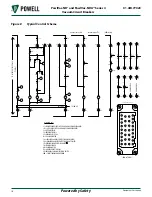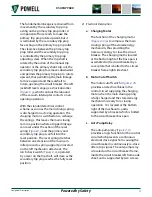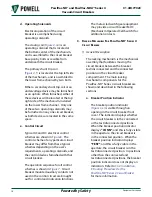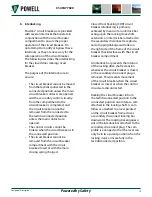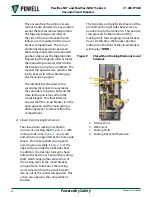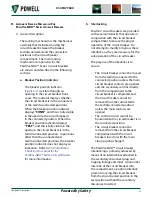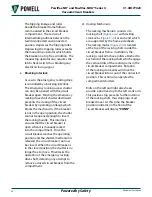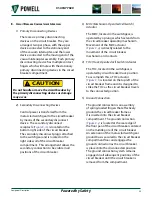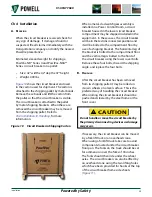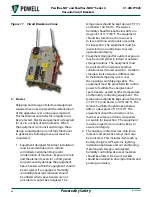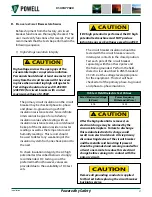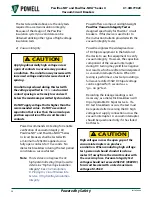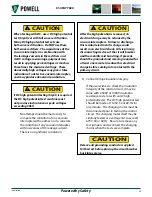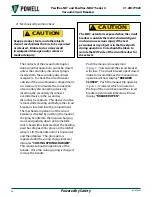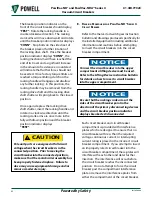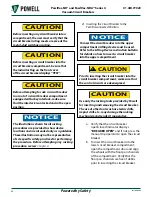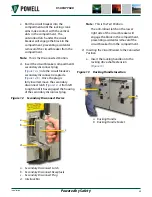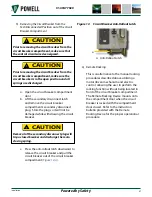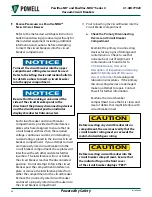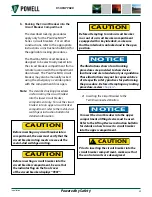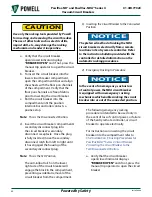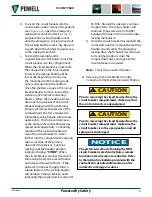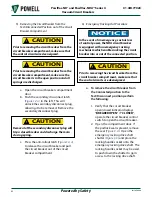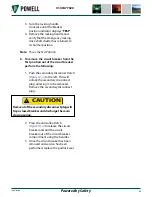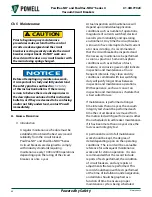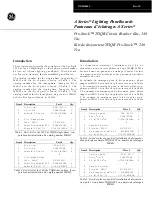
Powered by Safety
®
29
Installation
01.4IB.77020
When testing with DC, use a DC high potential
test (hipot) set with full wave rectification.
Many DC high potential test sets use
half-wave rectification. Do NOT use these
half-wave rectifiers. The capacitance of the
vacuum interrupter in combination with
the leakage currents in the rectifiers and
its DC voltage measuring equipment may
result in applying peak voltages as much as
three times the measured voltage. These
abnormally high voltages may give a false
indication of a defective vacuum interrupter,
and may produce abnormal x-radiation.
!
CAUTION
If DC high potential testing (hipot) is required,
the DC high potential test machine must
not produce instantaneous peak voltages
exceeding 35kV.
!
CAUTION
No attempt should be made to try to
compare the condition of one vacuum
interrupter with another, nor to correlate
the condition of any vacuum interrupter
with low values of DC leakage current.
There is no significant correlation.
After the high potential is removed, an
electrical charge may be retained by the
vacuum interrupters. Failure to discharge
this residual electrostatic charge could
result in an electrical shock. All six primary
disconnecting devices of the circuit breaker
and the metallic mid band ring, if present,
should be grounded and remain grounded for
at least one minute to reduce this electrical
charge before coming into contact with the
primary circuit.
!
CAUTION
3) Control Voltage Insulation Integrity
If the user wishes to check the insulation
integrity of the control circuit, it may be
done with a 500V or 1000V insulation
resistance tester or with an AC high
potential tester. The AC high potential test
should be made at 1125V, 50 or 60 Hz for
one minute. The charging motor must be
disconnected prior to testing the control
circuit. The charging motor itself may be
similarly tested at a voltage not to exceed
675V, 50 or 60 Hz. Be sure to remove any
test jumpers and reconnect the charging
motor when the tests are complete.
Remove all grounding conductors applied
for this test before placing the circuit breaker
back into service.
CAUTION


